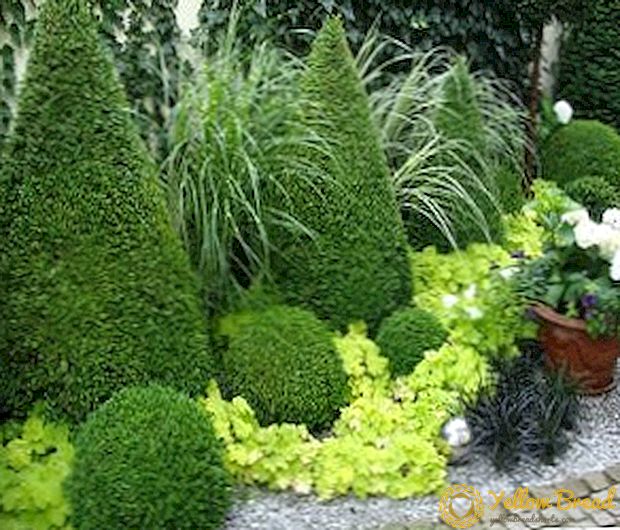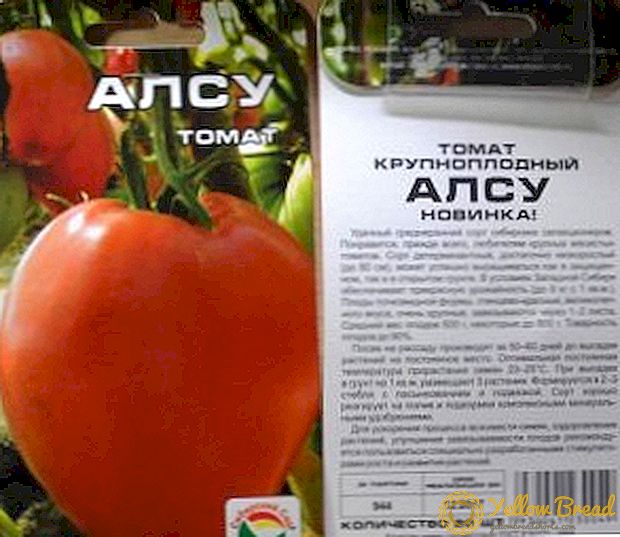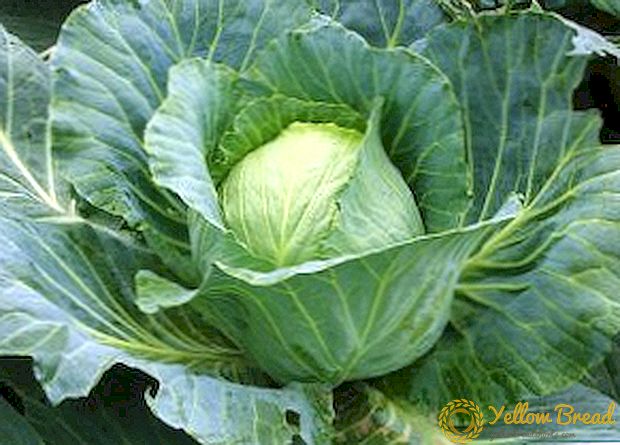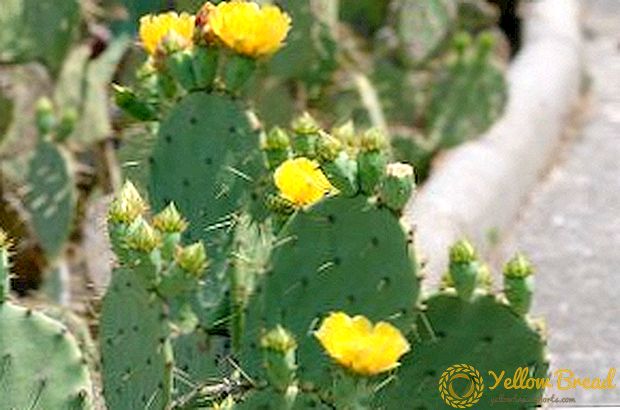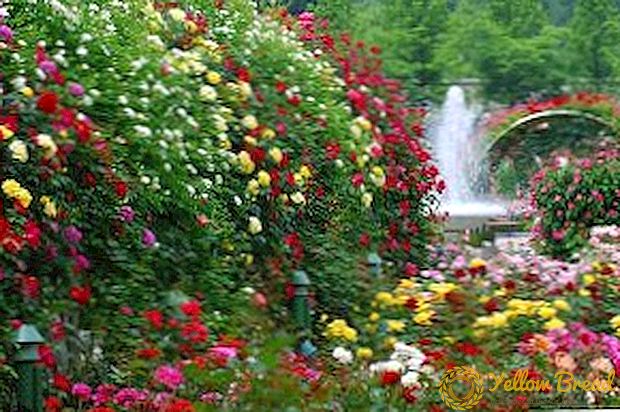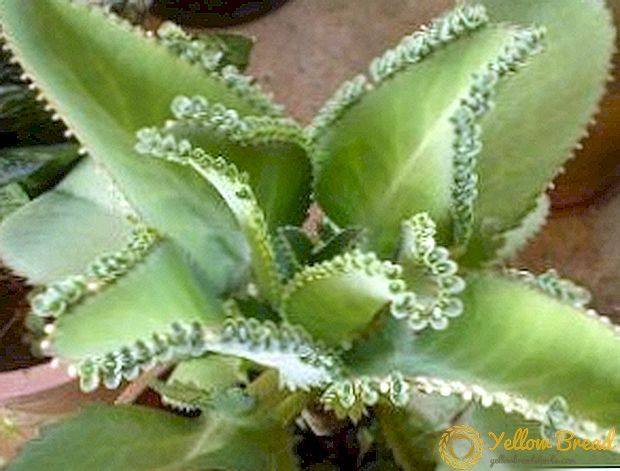 Tomato and pepper are among the most popular garden crops, which can be found in almost every site. They are tasty and have a large amount of vitamins needed by our body. In order to get a rich and high-quality harvest of these vegetables, it is important not only to plant them correctly, but to fertilize seedlings properly.
Tomato and pepper are among the most popular garden crops, which can be found in almost every site. They are tasty and have a large amount of vitamins needed by our body. In order to get a rich and high-quality harvest of these vegetables, it is important not only to plant them correctly, but to fertilize seedlings properly.
And in this article we will learn how we can feed pepper and tomato seedlings at home.
- Coffee
- Tea
- Eggshell
- Onion Husk
- Banana peel
- Iodine
- Potassium permanganate
- Milk
- Yeast
- Hydrogen peroxide
Coffee
The amount of vitamins in coffee depends on roasting and variety. For fertilizer use brewed thick, although it already has less nutrients. When growing seedlings on the window sill or in the greenhouse, coffee grounds should be fertilized by mixing it with the soil, otherwise there is a risk of mold and fungal diseases.

Tea
Tea fertilizer very useful for tomato seedlings. To prepare the solution, we take 1 cup of tea (it can be black or green tea) and pour 3 liters of boiling water, then insist about 5 days. The resulting infusion is used as a top dressing.
In addition, the used tea leaves can be used as mulch or mixed with the soil, or again with boiling water, and then added to the water for irrigation.
Eggshell
Top dressing for seedlings of tomatoes and peppers at home can be prepared from regular eggshellwhich many of us just throw away.
It is very easy to prepare such a fertilizer: you will need dried shells from 3 or 4 raw eggs (but you can also use boiled ones, although they have less minerals), which must be grinded on a coffee grinder, pour 1 liter of boiling water and then let it brew from 4 to 6 days Watering this dressing is very useful for seedlings of most vegetables. 
Onion Husk
The benefits of onion peel know, probably, many.It contains a rich set of very useful elements, antibacterial substances, so the treatment of seedlings with infusion of onion helps not only to saturate it with the necessary elements, but also to fight against diseases and pests.
Preparing the infusion as follows: 40-50 g of onion peel is added to 10 liters of hot water and infused for about 5 days. Similar infusion can be sprayed and watered.
Banana peel
Banana peel as a fertilizer can be used in three ways:
- The first way is that the chopped peel is just buried in the ground near the seedlings. The main thing is not to do it when you are going to carry out fertilizer of pepper or tomatoes with other preparations.
- The second, most valid, recipe for feeding banana is roasted. You need to put a banana peel on a baking sheet with foil and place in the oven. When the peel is roasted, it should be cooled and crushed. It is necessary to apply such fertilizer at the rate of - 1 spoon per bush. You can use it as a dry form (burying in the ground), and adding to the water.
- If you grow seedlings in a greenhouse, then the third recipe fits you well,which consists of the following: put a few skins of banana in a three-liter bottle and pour warm water to the neck, let it stand for 3 days. Before use, the infusion must be filtered and mixed with water in equal proportions.

Iodine
Many gardeners are wondering what is necessary to feed up tomato seedlings so that they are plump. Oddly enough, but the best way is iodine, which you can find in any pharmacy. But it is also useful in that it accelerates the growth of seedlings and the ripening of fruits, and is also used as a prophylactic against late blight. Apply iodine in the form of a solution that is prepared at the rate of 3-5 drops of iodine in a bucket of water. When watering for each bush you need to spend 2 liters of this solution.
Potassium permanganate
Manganese - This is a very important element in the life of tomatoes and peppers. He participates in photosynthesis, protects plants from many diseases and pests.The lack of manganese affects the quantity and quality of fruits, and also causes a disease such as brown spot. For the treatment of bushes, a solution is used: 2 g of potassium permanganate per 10 liters of settled water. Spraying with this solution should be carried out 1-2 times a week.
Milk
Feeding from milk Most valued for its high potassium content, which is very necessary for seedlings during growth. The following solution is used more often: 4-5 liters of water per 1 l of milk, 10-15 drops of an alcohol solution of iodine can also be added. For feeding, it is best to use raw milk, which can be bought on the market. Sterilized and pasteurized is best not to use, because after processing it loses almost all the useful elements.

Yeast
Yeast fertilizer is prepared in several ways:
- A bag of dry yeast is mixed with two tablespoons of sugar, then topped up with a small amount of warm water to dissolve the mixture. After that, the resulting substance is poured into a bucket of water and stirred. This solution is used at the rate of 500 ml per shrub.
- One pack of fresh yeast is stirred with warm water, then poured into a three-liter bottle, which is half filled with black stale bread, and then placed in a warm place for a few days. Then all this is filtered and watered seedlings of 500 ml per plant.
- The third method is the simplest: a pack of fresh yeast is stirred in a bucket of water and immediately poured over 500 ml per bush.
Hydrogen peroxide
Usually, hydrogen peroxide used for the preventive treatment of tomatoes from phytophthora. To do this, 15 ml of peroxide is stirred in 10-12 liters of water and, if desired, 30 drops of iodine are added, and then sprayed. But hydrogen peroxide can be used for irrigation. This solution is very easy to prepare: 4 tablespoons of 3% peroxide per 3 liters of water, and then water the plants at 0.5 liters per bush.
Top dressing for tomatoes and peppers cooked at home is not only environmentally friendly and beneficial for plants, but also beneficial for your wallet.

